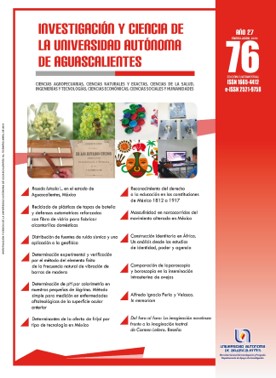Comparison of laparoscopy and borescopy in the intrauterine insemination of ewes
DOI:
https://doi.org/10.33064/iycuaa2019761805Keywords:
biotechnology, laparoscopy, borescope, reproduction, ewesAbstract
The intrauterine artificial insemination technique was compared by replacing the laparoscope with a borescope and its economic analysis. 36 Blackbelly sheep were used that were assigned to two groups (A= borescope, B= laparoscope). Estrus were synchronized with sponges impregnated with MPA plus a shot of eCG after sponge's removal. The study variables were onset of estrus, percentage of estrus presentation and pregnancy percentage. The onset of estrus was 32.50 ± 7.07 and 34.20 ± 8.64 h for group A and B, respectively, without finding significant differences (P > 0.05). The percentage of estrus presentation was 100% for both techniques, with no significant differences (P > 0.05). The pregnancy percentage was 83.33 and 77.77% for groups A and B, and no differences were found (P > 0.05).
Downloads
References
• Dogan, I., Nur, Z., Gunay, U., Soylu, M. K., & Sonmez, C. (2004). Comparison of fluorgestone and medroxyprogesterone intravaginal sponges for estrus synchronization in Saanen does during the transition period. South African Journal of Animal Science, 34(1), 18-22.
• Godfrey, R. W., Gray, M. L., & Collins, J. R. (1998). The effect of ram exposure on uterine involution and luteal function during the postpartum period of hair sheep ewes in the tropics. Journal of Animal Science, 76, 3090-3094. Recuperado de https://pdfs.semanticscholar.org/4538/8908776b5e48b88c20dc94d290a3678b8bc5.pdf
• González-Reyna, A., Lucero-Magaña, F. A., Briones-Encinia, F., Limas-Martínez, G., & Martínez-González, J. C. (2014). Factores que alteran la conducta en ovejas de pelo sincronizadas con acetato de fluorogesterona y gonadotropina de suero de yegua preñada. Abanico Veterinario, 4(2), 13-20.
• Herrera Haro, J. G., & Barreras Serrano, A. (2005). Manual de procedimientos: Análisis estadísticos de experimentos pecuarios: utilizando el programa SAS (3a. ed.). México, D. F.: Colegio de Postgraduados.
• Martínez-Tinajero, J. J., Izaguirre Flores, F., Sánchez Orozco, L., García Castillo, C. G., Martínez-Priego, G., & Torres Hernández, G. (2007). Comportamiento reproductivo de ovejas Barbados barriga negra sincronizadas con MPA y diferentes tiempos de aplicación de eCG durante la época de baja fertilidad. Revista Científica, FCV-LUZ, 17(1), 47-52.
Downloads
Published
How to Cite
License
Las obras publicadas en versión electrónica de la revista están bajo la licencia Creative Commons Atribución-NoComercial-CompartirIgual 4.0 Internacional (CC BY-NC-SA 4.0)









